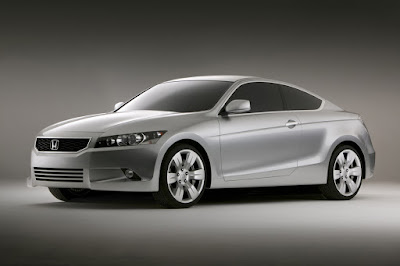12/9/09
i-VTEC (intelligent-VTEC [4]) introduced continuously variable camshaft phasing on the intake cam of DOHC VTEC engines. The technology first appeared on Honda's K-series four cylinder engine family in 2001 (2002 in the U.S.). Valve lift and duration are still limited to distinct low- and high-RPM profiles, but the intake camshaft is now capable of advancing between 25 and 50 degrees (depending upon engine configuration) during operation. Phase changes are implemented by a computer controlled, oil driven adjustable cam gear. Phasing is determined by a combination of engine load and rpm, ranging from fully retarded at idle to maximum advance at full throttle and low rpm. The effect is further optimization of torque output, especially at low and midrange RPM.
The K-Series motors have two different types of i-VTEC systems implemented. The first is for the performance motors like in the RSX Type S or the TSX and the other is for economy motors found in the CR-V or Accord. The performance i-VTEC system is basically the same as the DOHC VTEC system of the B16A's, both intake and exhaust have 3 cam lobes per cylinder. However the valvetrain has the added benefit of roller rockers and continuously variable intake cam timing. The economy i-VTEC is more like the SOHC VTEC-E in that the intake cam has only two lobes, one very small and one larger, as well as no VTEC on the exhaust cam. The two types of motor are easily distinguishable by the factory rated power output: the performance motors make around 200 hp or more in stock form and the economy motors do not make much more than 160 hp from the factory.
In 2004, Honda introduced an i-VTEC V6 (an update of the J-series), but in this case, i-VTEC had nothing to do with cam phasing. Instead, i-VTEC referred to Honda's cylinder deactivation technology which closes the valves on one bank of (3) cylinders during light load and low speed (below 80 kph) operation. The technology was originally introduced to the US on the Honda Odyssey minivan, and can now be found on the Honda Accord Hybrid, the 2006 Honda Pilot, and the 2008 Honda Accord.
An additional version of i-VTEC was introduced on the 2006 Honda Civic's R-series four cylinder SOHC engines. This implementation uses the so-called "economy cams" on one of the two intake valves of each cylinder. The "economy cams" are designed to delay the closure of the intake valve they act upon, and are activated at low rpms and under light loads. When the "economy cams" are activated, one of the two intake valves in each cylinder closes well after the piston has started moving upwards in the compression stroke. That way, a part of the mixture that has entered the combustion chamber is forced out again, into the intake manifold. That way, the engine "emulates" a lower displacement than its actual one (its operation is also similar to an Atkinson cycle engine, with uneven compression and combustion strokes), which reduces fuel consumption and increases its efficiency. During the operation with the "economy cams", the (by-wire) throttle butterfly is kept fully open, in order to reduce pumping losses. According to Honda, this measure alone can reduce pumping losses by 16%. In higher rpms and under heavier loads, the engine switches back into its "normal cams", and it operates like a regular 4 stroke Otto cycle engine. This implementation of i-VTEC was initially introduced in the R18A1 engine found under the bonnet of the 8th generation Civic, with a displacement of 1.8 L and an output of 140PS. Recently, another variant was released, the 2.0 L R20A2 with an output of 150PS, which powers the EUDM version of the all-new CRV
With the continued introduction of vastly different i-VTEC systems, one may assume that the term is now a catch-all for creative valve control technologies from Honda.
i-VTEC I
Honda’s i-VTEC I Engine is a variant of the K-series DOHC engine family featuring gasoline direct injection. It made its debut in the previous generation 2004 Honda Stream 7-seater MPV in Japan, but the current Stream does not use this engine anymore, instead using a 2.0 liter version of the R-series i-VTEC SOHC engine. The engine featured the ability to use ultra-lean air-fuel mixtures of about 65:1, much leaner compared to the usual direct injection engine 40:1 ratio, and extremely lean compared to the stoichiometric air-fuel mixture of 14.7:1. As a result of this ultra-lean mixture fuel consumption dropped to 15km per liter. Power ratings remain the same at about 155 horsepower.
Advanced VTEC
A September 25, 2006 press release announced the launch of the Advanced VTEC engine by Honda. The new engine combines continuously variable valve lift and timing control with the continuously variable phase control of VTC (Variable Timing Control). This new system permits optimum control over intake valve lift and phase in response to driving conditions, achieving improved charging efficiency for a significant increase in torque at all engine speeds. Under low to medium load levels, the valves are set for low lift and early closure to reduce pumping losses and improve fuel economy. In comparison to the 2.4L i-VTEC these advancements claim to increase fuel efficiency by 13%. Honda also claims that new engine also meets exhaust emission standards compliant with U.S. EPA - LEV2-ULEV regulations and Japanese Ministry of Land, Infrastructure and Transport requirements for Low-Emission Vehicles, with emission levels 75% lower than those required by the 2005 standards. Advanced VTEC engines should go into production for 2009 models.

Honda Accord Coupe




0 comments:
Post a Comment